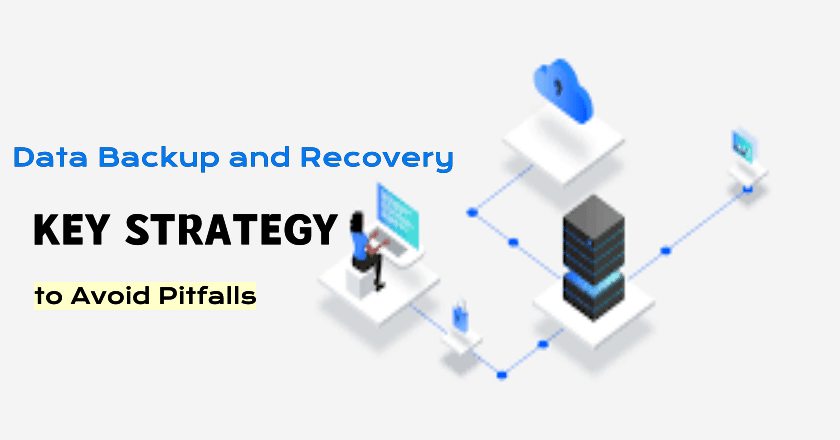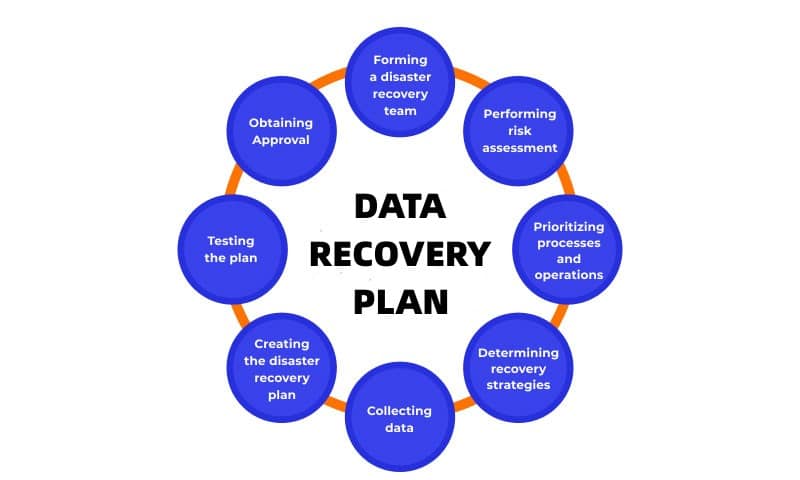“Data backup and recovery” is not only a technical must in today’s fast-paced digital world; it’s also a very important safety measure. The huge amount of data loss every year is because of breakdowns or breaches shows how important it is to have strong data protection plans. This introduction talks about the many problems that businesses can have when they back up and restore data. It shows why being proactive is not only a good idea, it’s also necessary. Businesses can avoid major data loss by being aware of these risks and putting in place thorough security measures. This will ensure stability and dependability in the digital age.
Data Backup and Recovery: Key Strategies to Avoid Pitfalls

-
Content
- Importance of Data Backup and Recovery
- Navigating Common Pitfalls in Data Backup
- Common Pitfalls in Data Recovery
- Best Practices to Avoid Common Pitfalls in Data Backup and Recovery
- Conclusion
-
Content
- Importance of Data Backup and Recovery
- Navigating Common Pitfalls in Data Backup
- Common Pitfalls in Data Recovery
- Best Practices to Avoid Common Pitfalls in Data Backup and Recovery
- Conclusion
Importance of Data Backup and Recovery
1. Protecting Against Data Loss
Data is what modern businesses depend on, so keeping it safe is their top priority. Protecting important data from removal by mistake, system breakdowns, and cyberattacks is made possible by using full data backup and recovery services. This proactive step is necessary not only to protect the accuracy of data but also to keep businesses running in case something unexpected happens.
2. Ensuring Business Continuity
It is hard for a business to keep running without strong backup plans. Businesses with good data recovery plans can quickly get back to normal after losing data, which keeps customers trusting them and cuts down on downtime. In a world where business delays directly lead to income losses, this consistency is essential for keeping a competitive edge and staying financially stable.
3. Legal and Regulatory Compliance
Another strong reason for strict data backup and recovery procedures is to meet legal and regulatory requirements. To protect data privacy and security, many businesses are ruled by strict data protection rules that require regular backups and specific recovery methods. Compliance not only keeps you from getting fined a lot of money, but it also improves your image, which makes customers and partners trust you more.
Navigating Common Pitfalls in Data Backup
1. Incomplete Backup Scope
Making sure that the backup covers everything is one of the hardest parts of data backup. A big mistake that many businesses make is only backing up part of their data, missing important files and systems. This mistake can be very bad if the parts of the data that weren’t saved up are needed for healing. An important part of a good data recovery plan is making sure that all important parts of the data are backed up.
2. Infrequent Backups
How often backups are done is just as important as how complete they are. A lot of businesses make the mistake of backing up their data too rarely, which causes backup plans to become less regular. When backups aren’t kept up to date, businesses can be left with data that is weeks or months old, which makes recovery efforts less effective. Setting up a regular, planned backup procedure is important to keep data available and secure at all times.
3. Damaged Backups
Data security can be lost when physical media fails or saved files become corrupted. If your files get damaged, you may not be able to recover your data. This can happen because of problems with the hardware, the surroundings, or mistakes in the software. To lower these risks, it is suggested to use digital forensics and advanced data recovery tools to make sure that saved data is safe and reliable. You can protect yourself even more from these problems by using strong storage solutions and doing regular security checks.
Common Pitfalls in Data Recovery
1. Lack of Testing Recovery Plans
A common mistake in data backup and recovery plans is not trying the recovery plans. There are a lot of groups that have rescue plans that haven’t been tested until there is a real problem. This can show big holes in your ability to recover from mishaps, which can cause longer downtime and possibly data loss. Recovery plans need to be tested and updated on a regular basis to make sure they work well when they’re needed the most.
2. Delayed Recovery Processes
How quickly data can be recovered is very important for keeping business operations running smoothly after data loss. Slow recovery times, which are a sign of delayed recovery processes, can seriously damage business stability. To keep operations running smoothly and keep customers trusting you, you must make sure that data is restored quickly. Using techniques like tiered recovery solutions can help get important data back faster by putting it at the top of the list for repair.
3. Inadequate Backup Security
Inadequate data backup and recovery protection is another major mistake that can happen when trying to recover data. Running malware or letting people in without permission can damage backups, which can ruin the whole recovery process. To keep stored data safe, it is important to use strong security measures like encryption and multi-factor identification. Making sure that backups are safe from these kinds of dangers not only protects the data, but also makes the company more resilient as a whole.
Best Practices to Avoid Common Pitfalls in Data Backup and Recovery
1. Comprehensive Backup Strategies
Full backup plans should be made and kept up to date so that you don’t have problems with backing up and recovering data. A lot of businesses forget to back up their important data, but this is something every business should do. Everything important, from bank records to customer information, should be kept in two copies. Also, it’s important to regularly look over and make changes to backup plans. This helps the backup plan adapt to new business needs or technological advances, so it stays strong and full.
2. Regular Testing of Backup and Recovery Plans
Testing data backup and recovery plans on a daily basis is another important habit. By practicing regular drills, you can make sure that your healing plan is complete and that there are no holes in it before they become real problems. After each test, there should be a review session where teams can change their plans based on how the tests went. This pattern of testing and changing is necessary to keep a recovery plan that works and can change to new problems that come up.
3. Utilizing Secure and Reliable Backup Solutions
Safety and dependability are the most important things to look for in backup options. Using cloud-based backups has many benefits, such as the ability to grow as needed, lower costs, and the ability to store data off-site, which adds an extra layer of safety against data loss due to physical damage like fires or floods. Encrypting backup data also makes sure that the information is safe even if it is stolen or accessed without permission. To protect the privacy and security of private data, this encryption should cover all saved data, whether it’s on-site or in the cloud.
Along with these steps, forensic data recovery methods can be added to backup plans to make them even stronger. Not only are forensic methods useful for looking into what happened after the fact, but they can also be very helpful for finding problems that regular software might miss. This method provides a stronger defense against complicated computer dangers.
4. Ensuring Backup Security Against Emerging Threats
With online risks always changing, it’s more important than ever to make sure you have backup defense against new threats. For mobile data safety, it’s important to do things like regular risk reviews and use cell phone data recovery options. These steps help businesses stay ahead of hackers and protect data on both desktop computers and mobile devices.
By following these best practices, businesses can greatly reduce the risks for data backup and recovery. This will protect not only their data but also the stability and resilience of their business operations.
Conclusion
Throughout this article, we’ve explored the essential practices of data backup and recovery, shedding light on why these processes are crucial for any organization. From understanding what is data backup and recovery to implementing comprehensive and secure strategies, the goal is clear: protect critical data and ensure business resilience. We highlighted common pitfalls such as incomplete backup scopes and infrequent testing, and emphasized best practices like regular policy reviews and leveraging advanced security measures.
Remember, effective data recovery and backup is not a one-time setup but a continuous commitment to safeguarding your organization’s most valuable asset its data. By adhering to these guidelines, businesses can enhance their recovery capabilities and shield themselves against the ever-evolving landscape of cyber threats.




